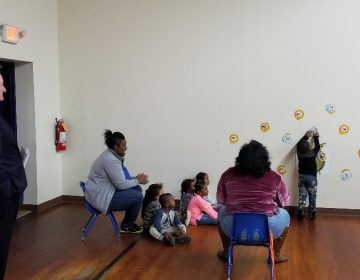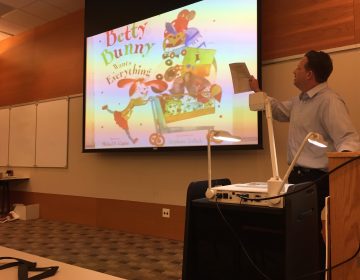Philly goes to school: Lessons in inclusive, universal pre-K
What Philadelphia can learn in crafting a pre-K program to close the achievement gap for kids from economically disadvantaged communities.
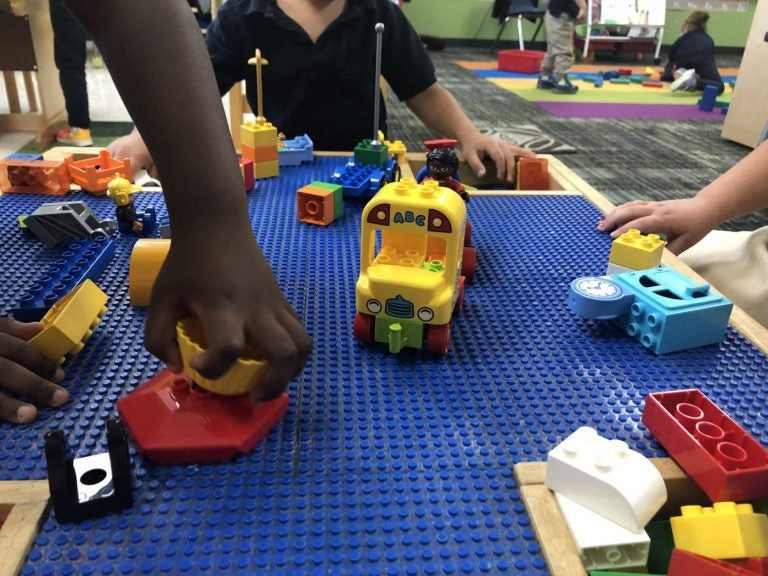
(NextCity)
This article originally appeared on NextCity. It was reported in collaboration with the Philadelphia Public School Notebook, an independent, nonprofit news service that serves as an information source and voice for parents, students, teachers and other members of the community who work for quality and equality in Philadelphia’s public schools.
—
To outsiders, Oklahoma may seem like an odd place to look for a shining example of public education policy.
This deep-red state has seen numerous cuts to public education funding over the last 30 years; stagnant teacher salaries over the past decade; and most recently a heated election cycle dominated by the aftermath of a massive statewide teacher strike. But Oklahoma also happens to lead the country in one particular public-education initiative: state-funded universal pre-Kindergarten.
Since the program was established in 1998, education researchers have been intrigued by the experiment. And as one of the earliest and most comprehensive sites for longitudinal data on the impacts of pre-K, policymakers across the country have taken notice of Oklahoma’s model.
In particular, America’s blue cities and states, where there is a fundamental belief in the value of state-funded services, have seen a surge in support for public money going towards expanded pre-K programs. Washington, D.C. leads in per-pupil funding and enrollment rates, and New York City Mayor Bill de Blasio’s ambitious program, backed by a $300-million investment from the state, has made the biggest splash. But other cities such as Chicago and Boston struggle to ramp up and secure consistent funding.
For Philadelphia, America’s most economically disadvantaged big city, the long-term effects of expanded pre-K are too clear to ignore. Absent any significant state support, the city’s plan for three- and four-year olds has been bankrolled through Mayor Jim Kenney’s soda and sugary-beverage tax. As Philly refines its approach and ramps up capacity, how can more established models illuminate the way forward?
In Tulsa, ‘setting our kids up for success’
One of the most prominent models of successful public pre-K expansion is not a bastion of progressivism, but instead one of the nation’s most tax-allergic political landscapes. Oklahoma voters passed a referendum in 1992 barring the government from raising any taxes without both the support of the governor and 75 percent of the state legislature, making it nearly impossible to raise any additional revenue streams. With no new taxes and existing sources of revenue cut over subsequent decades, the fact that a section of the state’s education budget was allocated to the establishment and expansion of a state-wide publicly-funded universal pre-K program seems like a miracle. In fact, it was the result of a state senator who snuck funding for pre-k into a bill that addressed a different issue. Decades later, as the rest of the country debates the merits of investing in expanded public pre-K options, much of the research that is quoted by advocates is from studies based on the Tulsa Public School district, where 68 percent of 4 year-olds are enrolled in one of the city’s high-quality pre-K classrooms, free of charge.
And the results are compelling.
Children who attended pre-K showed significant increases in kindergarten readiness. The gains were most significant for economically disadvantaged children or those from marginalized communities. Evidence suggests that pre-K is a promising solution to the growing achievement gap between affluent and economically disadvantaged students — a gap that alarms experts and policymakers alike. The origins of this persistent gap are felt as early as kindergarten. According to one study, fewer than 50 percent of children experiencing economic hardship (defined as coming from household incomes below 100 percent of the federal poverty level) enter kindergarten with adequate “kindergarten readiness.” At least 75 percent of children from more affluent households (185 percent of the poverty level or more) are kindergarten-ready.
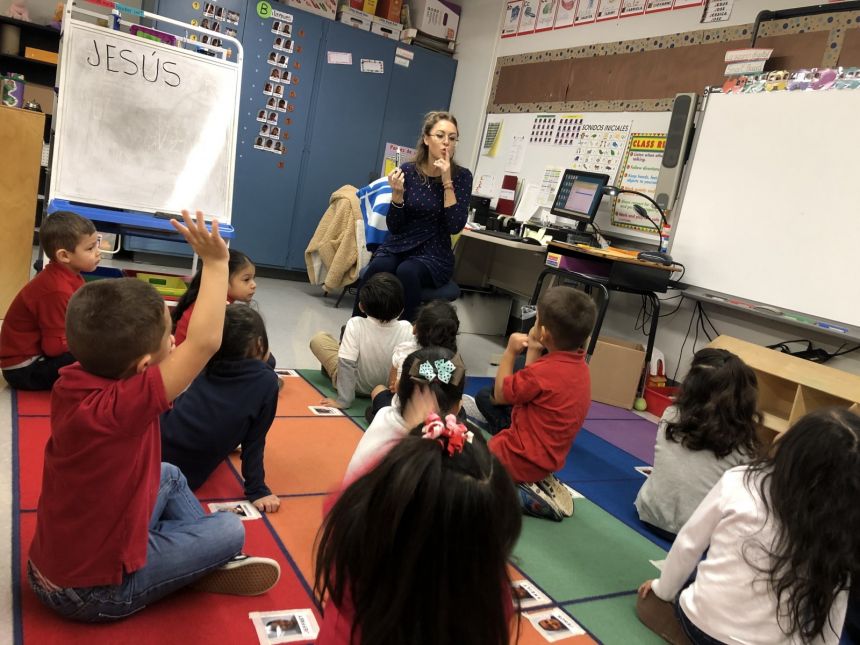
Without state-funded pre-K, most existing programs are inaccessible to low-income parents. In that light, advocates have pointed to universally accessible, high-quality pre-K as a proven way to stop or delay the achievement gap from the outset.
What kindergarten readiness looks like
For Ronda Kesler, it is not just academic research that proves the value of pre-K. She sees the effects every day. Kesler is the principal of Kendall-Whittier Elementary School in Tulsa, one of the public elementary schools in the city with multiple pre-K classrooms, expanding the traditionally coined “K through 6” school to “pre-K through 6”.
Kesler describes the difference in readiness levels between children who had attended pre-K and those who hadn’t as “tremendous.” Particularly for the population her school serves — ninety to ninety-five percent of students at Kendall-Whittier qualify for Title I funding every year — pre-K makes an enormous difference in setting up students for future success. “For kiddos who do not go to pre-K, if they don’t have the opportunity to have a home environment where the parents have the ability or the time to sit down and read, to work on numbers and letters, or if they’re an only child and they are not used to coming and being with 20 other kids, then kindergarten is their first entry point and they have many more barriers to overcome,” says Kesler, “if they’ve gone to pre-K, they’ve been exposed to what it is to do school and everything that goes with that. Those kids transition so much more easily and come in at higher levels.”
Ronda isn’t the only educator who sees this marked difference. Kelly Kane, the Executive Director of Early Childhood Education at Tulsa Public Schools, says that in recent focus groups with pre-K and kindergarten teachers throughout the district, she received overwhelming feedback that children who had attended pre-K were much better prepared for kindergarten. Teachers say that one of the most profound differences was the children’s social-emotional development, or “the social skills around how to be in school, how to follow directions, how to share with friends, things like that,” says Kane, which often take up much of the first few months of kindergarten. These skills, Kesler agrees, are in some ways even “more important in our pre-K space even than academics in setting our kids up for success.” With that out of the way when most of the kids have already been to pre-K, kindergarten teachers can more effectively and efficiently get to the academic pieces of kindergarten like writing letters, counting numbers, or practicing more precise motor skills.
Tulsa’s universal pre-K program is implemented within the existing public school district system (in addition to within charter schools and Head Start centers), rather than utilizing a “mixed-delivery model” that cities such as Philadelphia and New York choose to follow, in which a variety of programs, providers and facilities are paid for with a mix of public and private funds. While certain constraints come with a public school model — for example, the challenge of expanding more classrooms within existing school buildings — one of the upsides is environmental continuity for both children and parents from pre-K through the rest of elementary school.
Jessica Stewart, a pre-K teacher at Kendall-Whittier, says that initially she was surprised how some students who had been to a pre-K program elsewhere before coming to the school for kindergarten ended up experiencing some similar social and attachment issues as children who had never been to pre-K. But she eventually came to realize that after a year or more in the same environment, “to those kids, those teachers, that building, that is school. That’s what they mean by ‘I am going to school’. But then they get taken to a new building with new kids and new teachers. Their entire understanding of what is school has been changed,” says Stewart, noting that various pre-K programs have strong partnerships that try and minimize this transition for students, “but it is still hard for them at the beginning.”
Another benefit of housing pre-K within a larger elementary school is the ability for staff to observe and structure long-term education plans. Kesler says she and her teaching staff see the impacts of pre-K on students at least through third grade.
Here is where some research varies. While the immediate impact of pre-K on kindergarten readiness is widely accepted, how long those gains are sustained has been the source of some debate. Most of the research points to long-term gains: some have focused on the original Tulsa pre-K cohorts through middle school, while other longer-term (but also tracking a small group of students) studies have shown that those who attend pre-K programs have lower incarceration rates and end up earning higher wages than their peers who did not attend pre-K. A few more recent studies have countered those findings, showing that the gains from pre-K in certain states did not persist into the middle-school years, leading many to question how the quality of a pre-K program could impact the longevity of achievement gains.
While Kesler and her staff can confidently say that they see the effects of pre-K on older students, she notes that pre-K is not the silver bullet to the country’s education crisis. As a child gets older, Kesler says, other factors play an increasing role in children’s success. “If there is high-absenteeism, it’s usually a family issue. If there is trauma in the home, divorce happens, or loss of job or a loss of a family member or whatever, those things happen and cause trauma and can cause tremendous changes. Those all affect a child in their development. There are just a lot of factors,” says Kesler, “It’s hard to rule out and say oh, well, pre-K doesn’t count as much anymore so is it really valid? Yes, it is incredibly valid. There are just other life factors that play in as they get older.”
Find the right model, then customize
To ensure that the gains persist later in a child’s educational experience, Kane’s team is working on improving what she calls “a seamless continuum from pre-K through third grade.” This envisions what learning could look like planned across a longer span so that gains in early childhood education can be more effectively sustained for all students, hopefully further narrowing the achievement gap and minimizing costlier and more time-intensive interventions down the line, if students fall farther behind as they age.
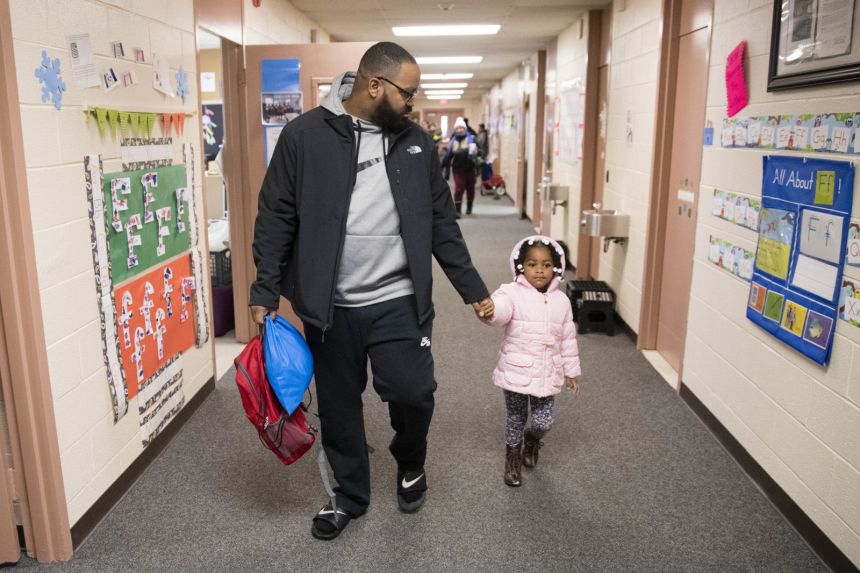
But thinking about how to better streamline continuity of instruction for students from pre-K through elementary school is a level of improvement that can only happen after 20 years of tweaking implementation. Cities and states who are new to the public pre-K idea, but convinced of its merits, are trying to answer much more fundamental questions like: how do we get expanded pre-K programs off the ground, expand capacity, and ensure quality all within an environment where public education funding is notoriously scarce? If one wants to be convinced of the value of publicly-funded pre-K, Tulsa is the place to look. But for cities looking for replicable models to inform their own pre-K funding and expansion, it perhaps proves less useful.
For Philadelphia, the answer had to be local. Mayor Jim Kenney ran in 2015 on a proposal to expand publicly-funded pre-K for all three and four-year-olds and won. But in the midst of a months-long budget impasse between Pennsylvania’s Democratic governor and Republican legislature (one of many over the next few years), as well as a constant debate over adequate education funding from Harrisburg, the City of Brotherly Love could not depend on the type of financial support from the state capital that Tulsa has benefitted from since 1998.
If it wasn’t going to come from the state, it had to come from the city.
Additionally, a system run directly by the Philadelphia School District wasn’t going to work. The school district did not have the capacity necessary to accommodate an influx of (potentially) more than 42,000 students. There is also the matter of scale: the Philadelphia School District is roughly five times the size of Tulsa’s. In fact, there are more three and four-year-olds living in Philadelphia than the total number of students enrolled in Tulsa’s Public Schools.
In New York City, a state-funded windfall brings rapid expansion
For a city-driven model that utilized a wide range of early childhood education centers — public school, community and family providers — Philadelphia only needed to look about 100 miles to the north.
New York City Mayor Bill de Blasio campaigned on universal pre-K about two years earlier than Kenney. By far the most progressive major candidate in the race, de Blasio proposed a tax increase on all New York residents making over $500,000 per year to pay for universal pre-K expansion throughout the five boroughs. It was a primary, and popular, pillar of his campaign.
Following strong and immediate pressure from de Blasio, political calculations in Albany led to a surprising turn of events: Cuomo found $340 million in the budget to give to de Blasio to run the program for five years. (The following fall would be an election year for Governor Andrew Cuomo, and he shied away from a fight over an income-tax increase.)
At the time, New York City had about 20,000 publicly funded pre-K spots. In order to be eligible for one, families had to meet certain income requirements, ensuring that the seats were reserved for children of low-income parents. Not only did de Blasio firmly believe that high-quality pre-K should be free for working New Yorkers, he also took the more controversial position that pre-K should be open to every student who was 4 years old by September 1, regardless of their family’s income level. That meant that parents who already sent their children to private pre-K programs would also benefit on the taxpayer’s dime. De Blasio argued that by making the program universal, it would garner significant and widespread voter support, making it more sustainable. Also, children benefit from being in classrooms characterized by cultural, racial and socioeconomic diversity. Committed to a truly universal pre-K and aptly titled “Pre-K for All,” New York City launched the program in a matter of months.
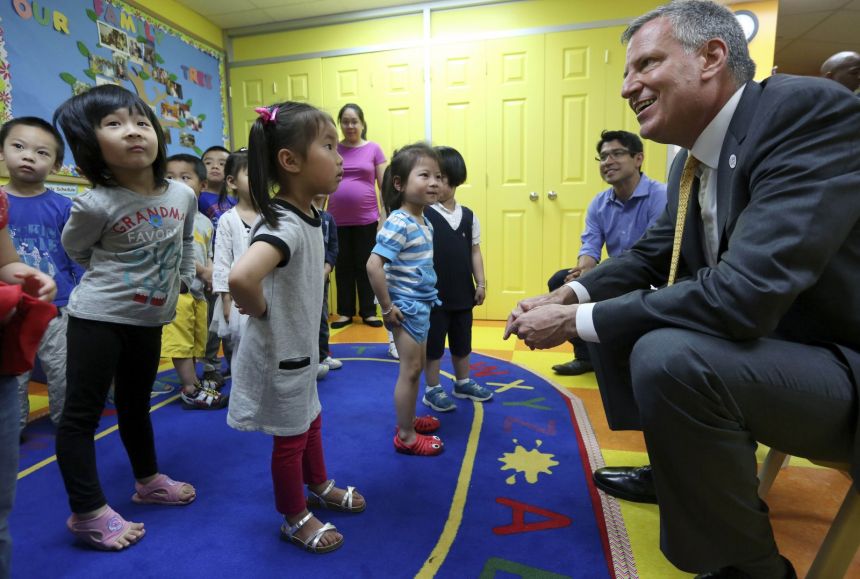
The growth was extraordinary. Within three years, the number of fully-funded pre-K spots swelled from 20,000 to 70,000. While improvements are still necessary — some programs have waiting lists and some families are matched with programs that are too far away — Pre-K for All is viewed, by almost all measures, as de Blasio’s most impressive policy success. He recently announced an expansion of the program to include all of New York City’s three-year-olds.
Philadelphia flies solo, buoyed by a sugary tax
Philadelphia’s own program began a few years after New York’s, but from the outset had conceived of including both three- and four-year-olds. The launch was dramatic in a different way. Just as the Oklahoma funding system was unrealistic as a model for Philadelphia’s situation, the idea that Harrisburg lawmakers would hand the city hundreds of millions of dollars for the program was laughable. Kenney would have to find another way of paying for it.
Each city governs under a different set of constraints, represents a different constituency, and has to navigate unique local politics. At the end of 2015, the City put together the Philadelphia Commission on Universal Pre-Kindergarten. The group’s mission was to look at all the models and options that had been tried, examine the local childcare landscape in the city, assess the needs of Philadelphia families and communities, and eventually issue recommendations for what Philly’s program should look like.
Meanwhile, people inside the new Kenney administration explored how to pay for it. Instead of an income tax, as de Blasio had initially proposed, Kenney chose another tactic: he proposed the Philadelphia Beverage Tax (PBT), a tax on soda and other sweetened beverages explicitly with the purpose of funding universal pre-K.
After heated debate, fierce negotiating and lobbying City Council, Philadelphia passed the PBT about six months after Kenney took office. The tax was projected to bring in $91 million, most of which would go towards education — expanded pre-K as well as community schools and other smaller initiatives. Immediately soda companies sued, the beginning of a long and nasty litigation process that would take two years before finally being decided by the State Supreme Court.
But in the middle of 2016, things looked promising. The City Council had passed the soda tax and the Philadelphia Commission on Universal Pre-Kindergarten had published its final recommendations report. The Commission looked at numerous cases across the country, cherry-picking strategies that might work in Philadelphia. Throughout the report, you can see fingerprints of lessons learned from other cities. Statistics from the studies done in Oklahoma (and others) showing the efficacy of pre-K in closing the achievement gap and potential impact on high-risk students serve as some of the report’s most convincing justifications. The choice to recommend a “mixed-delivery model” — that is, using, improving and expanding the existing network of providers — bears resemblance to New York’s model. And the idea to allow providers to layer funding streams (such as the state child-care subsidy and Philadelphia Pre-K funding) for children who qualify came from Washington, D.C.’s 10-year old universal pre-K system, which is not a mixed-delivery model, but which has one of the country’s highest participation rates.
All three of these models are open to all families, regardless of income level, as is Philadelphia’s. But, as with many things in the report, Philadelphia made it their own. Any child who is three or four years old by September 1 and lives in Philadelphia is eligible for PHL Pre-K. But the first few rounds of providers were approved based on their location and communities that they served, with priority given to facilities in disadvantaged neighborhoods or in “pre-K deserts.” The result is that 75 percent of families currently occupying Philadelphia Pre-K spots earn 200 percent or less of the federal poverty limit (about $50,000 for a family of four). As the program expands and more seats become available, the hope is to eventually serve all of Philadelphia’s three- and four-year-olds. But the way the expansion is being implemented, students at the highest risk and who would benefit the most are being served, even as the program remains inclusionary.
The Commission report reflected not only policy research but conversations with providers who already operated childcare centers as well as parents and other community stakeholders. While the primary benefit of pre-K is the education of children, universal pre-K provides other secondary social benefits. Most obviously, publicly funded pre-K allows parents to work without worrying about how they will pay for childcare. But an increase in childcare centers also leads to the expansion of a skilled and accredited workforce. And in places where mixed-delivery models support early childhood education, you’re also supporting small business owners within a framework of quality control.
The diverse benefits that come with pre-K expansion were reflected in the commission’s report, and most of the recommendations have been adopted, at least in part. However, every choice has its drawbacks. With Philadelphia, the rollout has been slower than many would like, specifically because of the way the system was designed.
While the Commission report recommended a variety of revenue streams that could go to fund the program, the administration chose to rally behind the soda tax as the chief source of revenue. The litigation that followed — predictable for anyone who remembers Big Soda’s takedown of Michael Bloomberg’s failed and equally drawn-out attempt at a soda tax when he served as New York’s mayor — delayed Mayor Kenney’s already relatively modest expansion plans. Additionally, linking public-service funding to a constituent behavior (particularly when a benefit of the tax is to disincentivize that behavior), runs the risk of your funding waxing and waning with unpredictable consumer habits. In Philadelphia’s case, the first year of the tax saw $78.8 million in new revenue, $13 million below expected numbers. Subsequent projected revenues have been lowered by approximately 15 percent. While the city had originally planned to open 6,500 new pre-K seats by fiscal year 2023, that projection was decreased by 1,000.
Nevertheless, 5,500 new publicly funded pre-K spots means 5,500 more children who are kindergarten-ready and 5,500 parents who can work instead of having to stay home or find alternative childcare because they can’t afford pre-K. Like New York and even Tulsa, adjustments will be made and improvements considered for years to come. Yet collectively, American cities and states have increasingly rallied behind universal pre-K, learning from each other while customizing their programs to fit their unique needs. In some ways, communities across the country — red and blue, urban and rural — are following a lesson straight out of a pre-K classroom: be true to yourself, but be sure you help others as well. Together, you’ll grow.
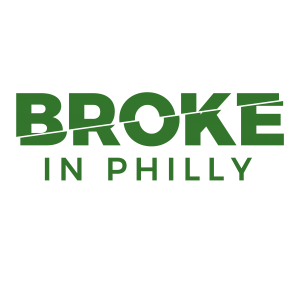 Next City is one of 22 news organizations producing Broke in Philly, a collaborative reporting project on solutions to poverty and the city’s push toward economic justice. Read more at BrokeInPhilly.org and follow us on Twitter @BrokeInPhilly.
Next City is one of 22 news organizations producing Broke in Philly, a collaborative reporting project on solutions to poverty and the city’s push toward economic justice. Read more at BrokeInPhilly.org and follow us on Twitter @BrokeInPhilly.
WHYY is your source for fact-based, in-depth journalism and information. As a nonprofit organization, we rely on financial support from readers like you. Please give today.



